What Are The Oldest Rocks On Earth? The oldest known rocks on Earth are found in various locations around the world, offering insights into our planet’s early history, and at rockscapes.net, we aim to share this knowledge with you. These ancient formations provide valuable clues about the Earth’s formation and evolution. Discover stunning rock features and learn more about landscape design using rocks!
1. Unveiling Earth’s Ancient History: The Hadean Eon
The Hadean Eon represents Earth’s earliest geological period, a time of intense activity and transformation. It’s named after Hades, the Greek god of the underworld, reflecting the harsh and hostile conditions that defined this era. Let’s delve into the Hadean Eon and understand its significance in shaping our planet’s history.
During the Hadean Eon, Earth experienced extreme conditions, often described as “Hell on Earth.” Magma oceans covered the surface, noxious gases filled the atmosphere, and frequent asteroid impacts occurred. Such an environment made it impossible for life to exist as we know it today.
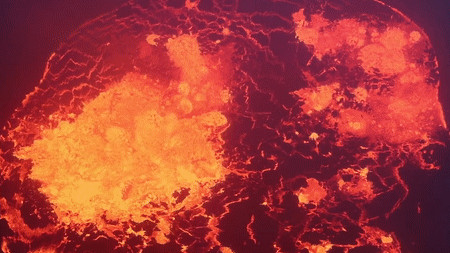 Analogous lava lake in Kilauea volcano resembles Earth's Hadean magma ocean
Analogous lava lake in Kilauea volcano resembles Earth's Hadean magma ocean
The Hadean Eon lacks specific Eras or Periods due to the limited amount of remaining Earth material from that time. Geologists continue to analyze remnant minerals and rocks to refine our understanding of this formative period.
 The Geologic Times Scale showcases the Hadean and Archean Eons.
The Geologic Times Scale showcases the Hadean and Archean Eons.
2. Key Events Shaping the Hadean Landscape
What major events shaped the Hadean Eon? The Hadean Eon was characterized by several key events that significantly shaped the Earth’s early development. Here are some of the most important ones:
2.1. Differentiation of Earth’s Interior
How did Earth’s interior differentiate during the Hadean Eon? According to planetary geologists, near the end of Earth’s accretionary stage (4.5 – 4.6 Ga), Earth was heavily bombarded by planetesimals. The immense energy from these collisions melted the surface, creating vast magma oceans. Radioactive decay added to the heat, potentially melting the entire planet or turning it into a slushy, convective mass.
This led to a differentiation process where heavier siderophile (iron-associated) elements migrated to the core, while lighter lithophile (lithosphere-concentrated) elements rose to the surface. Differentiation occurred rapidly, within tens of millions of years, resembling a percolation of siderophile elements through the magma ocean.
 Core-mantle differentiation process, showing how elements separated in early Earth
Core-mantle differentiation process, showing how elements separated in early Earth
Seismic wave analysis has helped scientists understand the density differences and composition of Earth’s layered interior.
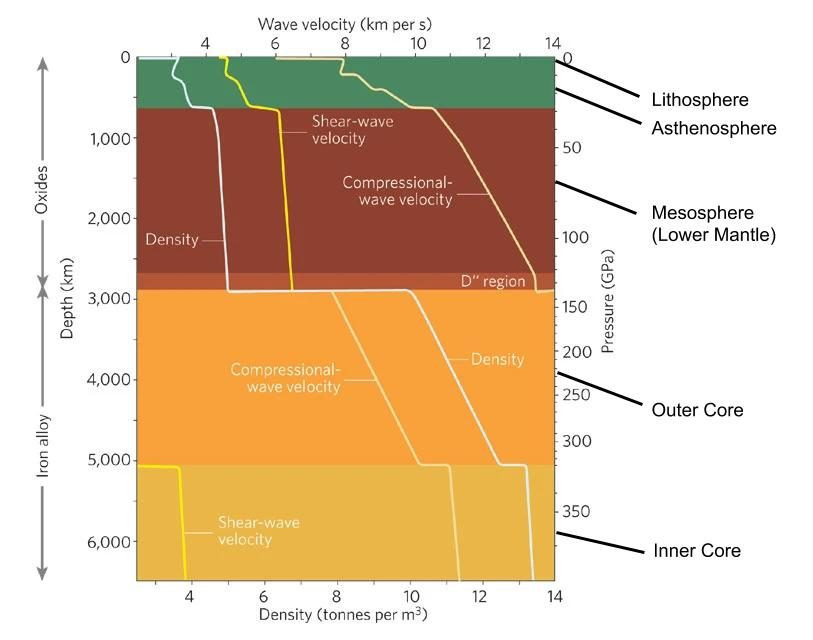 Understanding Earth's inner structure via seismic waves.
Understanding Earth's inner structure via seismic waves.
2.2. Formation of Earth’s First Crust
What was the composition of Earth’s first crust? As differentiation progressed, the light-element-enriched magma ocean cooled, leading to the formation of a thin, early crust. Constant meteor impacts disrupted this crust, causing magma to flow again. The composition of this early crust was similar to komatiite, a rare ultramafic rock mainly composed of olivine.
Komatiites are now scarce, primarily found in Archean-age rocks. They originated from the Earth’s hot mantle, pooling on the surface as lava. As Earth cooled and the mantle solidified, the generation of ultramafic magma became rare.
2.3. Magma Composition Review
How did magma composition evolve during the Hadean Eon? Differentiation resulted in an iron-dominated core and silicate-dominated mantle and crust. Silicates are minerals composed of silicon and oxygen, along with other lithophile elements. While not all iron migrated to the core, Earth continued to be bombarded by space debris containing various elements.
The magma ocean was silica-dominated and relatively homogeneous. The first crust, composed of komatiite, reflected this composition. Convection in the magma ocean brought diapirs of deep magma toward the surface, where they cooled into thick komatiite masses. Remelting of these masses further differentiated the early crust.
Partial melting near the surface enriched the magma with silica, as minerals with the most silica melted first. This evolved magma was less dense and rose to the surface, leading to varying compositions in igneous rocks. This process increased the felsic composition of magma over time.
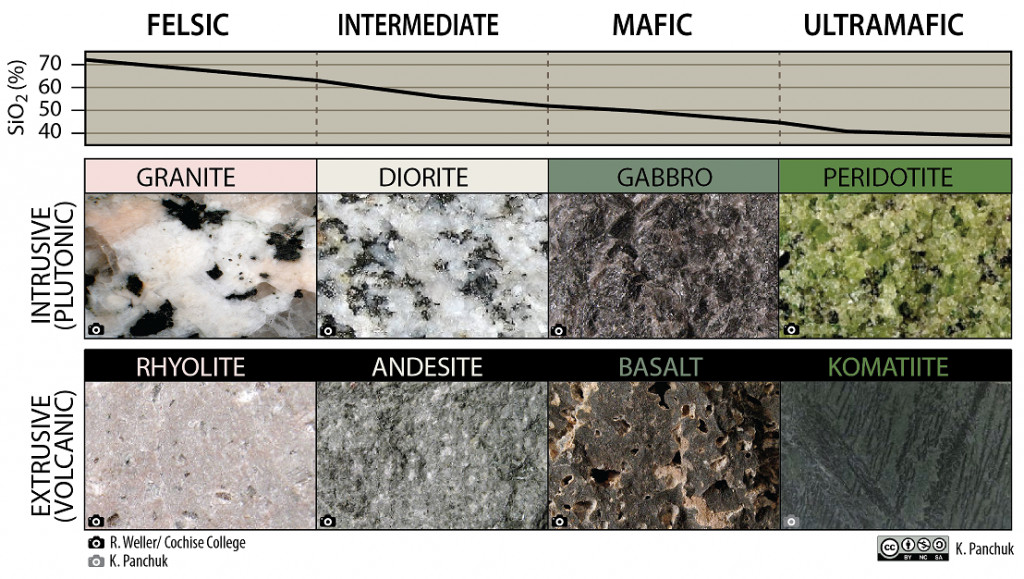 Classification diagram for igneous rocks.
Classification diagram for igneous rocks.
3. Delving into Earth’s Oldest Rocks
What are the oldest rocks on Earth and where can they be found? Discovering Earth’s oldest rocks provides crucial insights into the planet’s early history. Here, we explore some of the most significant finds.
3.1. The Enigmatic Jack Hills Zircon
Why is the Jack Hills Zircon important in geological studies? The Jack Hills area in southwest Australia is renowned for its Hadean-age zircons. Zircon, with the chemical formula ZrSiO4, is a durable mineral commonly found in felsic rocks like granite, but less so in oceanic crust rocks like basalt or early crust rocks like komatiite.
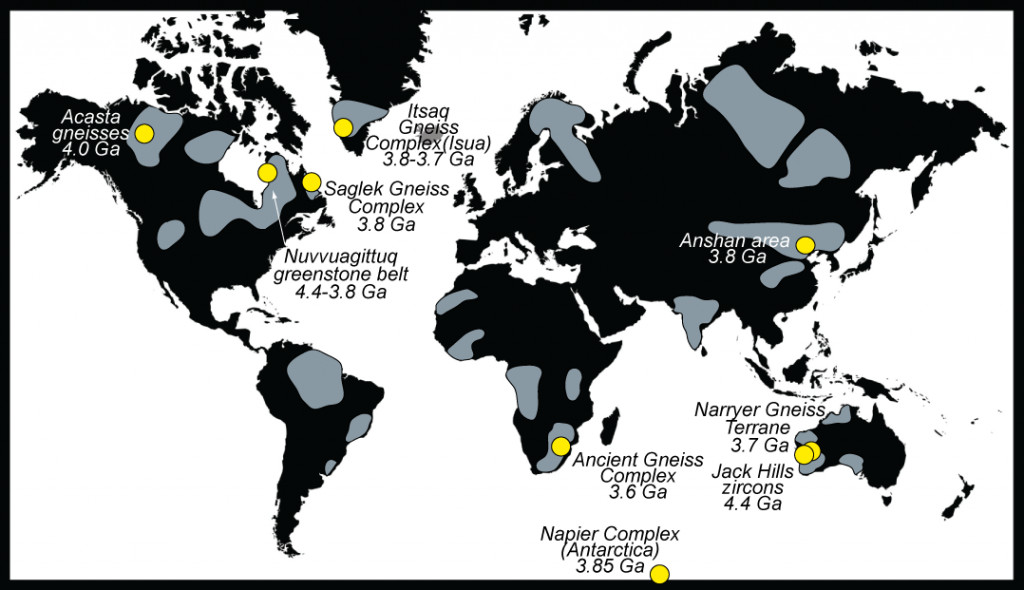 Mapping Earth's ancient Archean cratons and oldest rock sites
Mapping Earth's ancient Archean cratons and oldest rock sites
In the mid-1980s, geologists sampled a metamorphosed sedimentary rock (metaconglomerate) from Jack Hills, dated to approximately 3.6 Ga. The detrital sedimentary particles within this metaconglomerate are even older. These particles are thought to have originated from the weathering and erosion of mountains, deposited in an alluvial fan environment.
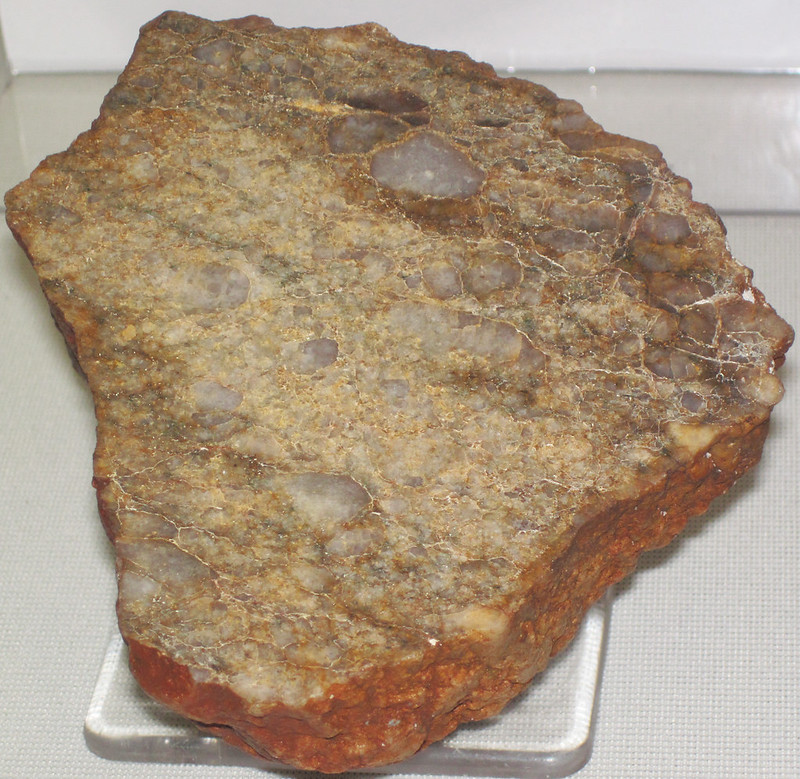 Quartz metaconglomerate from Jack Hills in Western Australia reveals Archean history
Quartz metaconglomerate from Jack Hills in Western Australia reveals Archean history
Zircon crystals extracted from the metaconglomerate were originally part of these ancient mountains, which have since been eroded away.
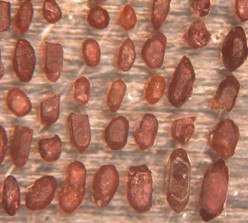 Jack Hill zircons on tape, showcasing their timekeeping ability
Jack Hill zircons on tape, showcasing their timekeeping ability
Zircon is a valuable “timekeeper” because it forms during magma crystallization, where radioactive uranium can substitute for zirconium. After crystallization, the radiometric clock begins as uranium atoms decay into lead at a known rate, enabling accurate dating. Analysis of Jack Hills zircons has yielded dates as old as 4.404 Ga, approximately 150 million years after Earth’s formation, indicating that Earth rapidly formed, differentiated, and cooled to form a solid crust.
The discovery of these zircons has transformed our understanding of the Hadean environment and crustal evolution, revealing that diverse crustal compositions existed early in Earth’s history.
Oxygen isotope data from the zircons indicates that they formed through cool, wet, sedimentary processes, suggesting the presence of oceans on the young Earth. The magma that formed the zircons may have originated from sediments deposited on an ancient ocean floor, challenging previous assumptions about the Hadean Eon being a hellish environment.
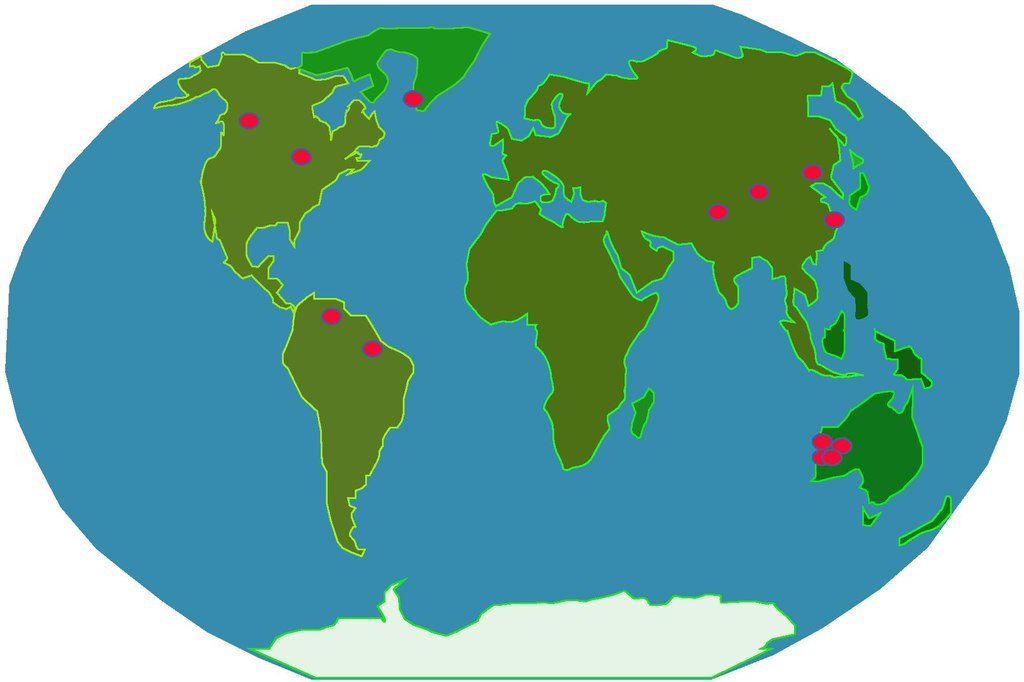 Global distribution of Hadean age zircon discovery sites.
Global distribution of Hadean age zircon discovery sites.
3.2. The Ancient Acasta Gneiss Complex
Where is the Acasta Gneiss Complex located and what makes it significant? While Jack Hills zircons confirm the existence of rocks around 4.404 Ga, actual rocks of that age have been challenging to find. The Acasta Gneiss Complex in the Slave Craton of Northwest Canada contains the oldest unquestioned isotopically dated rocks on Earth.
This complex includes highly deformed and metamorphosed tonalite-trondhjemite-granodiorite (TTG) rocks, similar to granite but with distinct chemical and mineralogical differences. TTGs are commonly formed as intrusive bodies along tectonically active continental margins today.
 Acasta Gneiss fragment displayed at the Natural History Museum in Vienna
Acasta Gneiss fragment displayed at the Natural History Museum in Vienna
Dating of the Acasta Gneiss using U/Pb isotopic techniques on zircons indicates several intrusive magmatic events between 2.94 Ga and 4.02 Ga. The oldest igneous activity occurred between 3.92 and 4.02 Ga, straddling the Hadean/Eoarchean boundary.
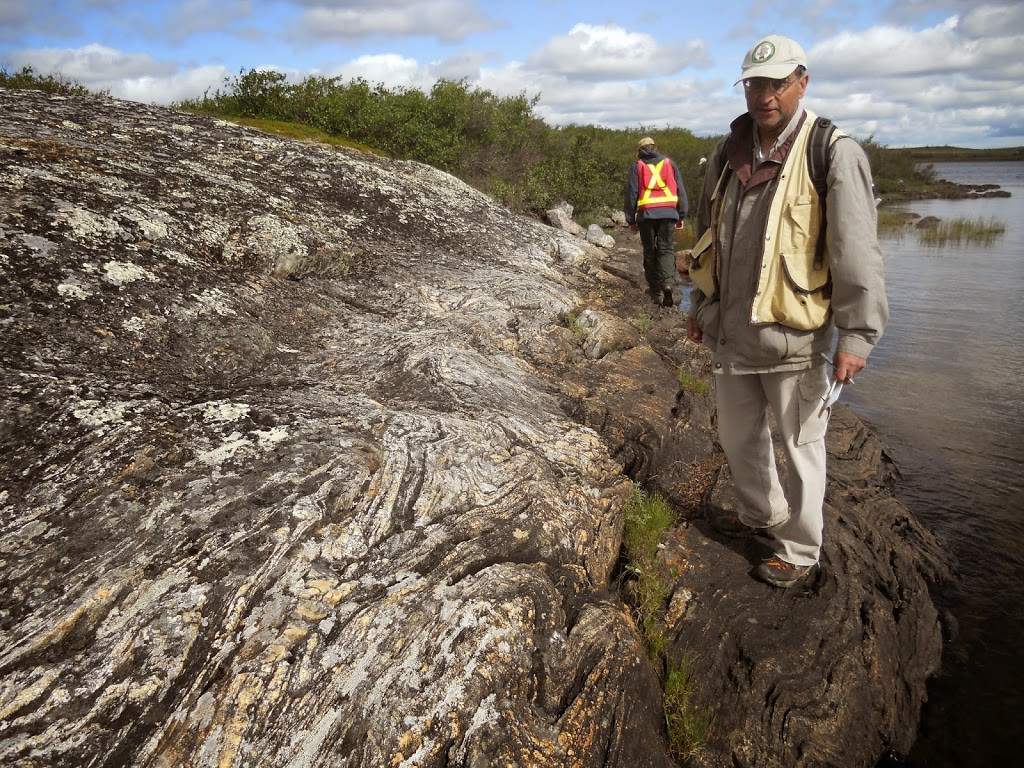 Exposure of the Acasta gneiss showing tight tectonic folds.
Exposure of the Acasta gneiss showing tight tectonic folds.
Analysis of the Acasta Gneiss suggests that the oldest rocks in the complex were derived from partial melting of mafic Hadean crust around 4.3 billion years old, further confirming the presence of continental crust in the Hadean Eon.
3.3. The Controversial Nuvvuagittuq Greenstone Belt
Why is the dating of the Nuvvuagittuq Greenstone Belt controversial? The Nuvvuagittuq Greenstone Belt (NGB) in northern Quebec may offer a glimpse into Earth’s earliest crust, although its dating remains controversial.
The NGB primarily consists of metamorphosed mafic and ultramafic volcanic rocks, indicative of ancient ocean crust. The presence of lava pillows confirms that these rocks erupted underwater.
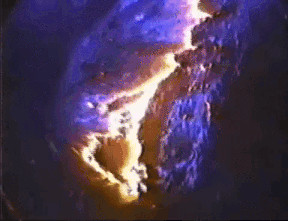 Modern lava forming underwater into pillow shapes.
Modern lava forming underwater into pillow shapes.
Banded iron formations (BIFs) within the NGB also suggest an oceanic environment, as these sedimentary iron minerals form and settle out of the water. Intrusive mafic and ultramafic dikes are also present.
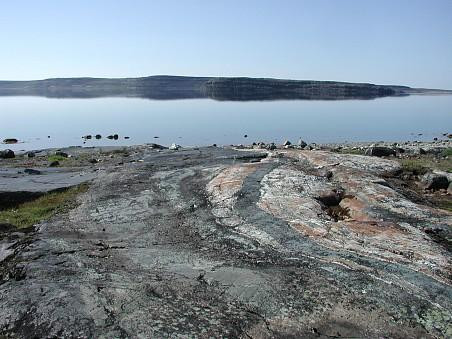 Metamorphosed rocks of the Nuvvuagittuq Greenstone Belt in Porpoise Cove, Quebec.
Metamorphosed rocks of the Nuvvuagittuq Greenstone Belt in Porpoise Cove, Quebec.
The NGB is bounded by a felsic intrusive rock called tonalite. Both the NGB and tonalite are cut by pegmatite, another felsic rock. U/Pb dating of zircon in the tonalite and pegmatite provides a minimum age of 3.77 Ga for the NGB, but the maximum age remains undetermined.
As greenstone rocks lack zircon, alternative dating methods have been used. In 2008, Jonathan O’Neil used samarium (Sm) and neodymium (Nd) isotopic ratios to determine the NGB’s age as 4.28 Ga, later revised to 4.31 Ga. If accurate, this would make the NGB the oldest preserved Hadean-age rock on Earth.
 Oldest rock, an amphibolite from Nuvvuagittuq Greenstone Belt.
Oldest rock, an amphibolite from Nuvvuagittuq Greenstone Belt.
However, not all geologists agree with O’Neil’s findings. Some interpret the isotopic data as indicating that the NGB was derived from pre-existing Hadean-age rock, with its formation occurring in the Eoarchean (3.7 Ga). The controversy continues due to the absence of zircon in the NGB.
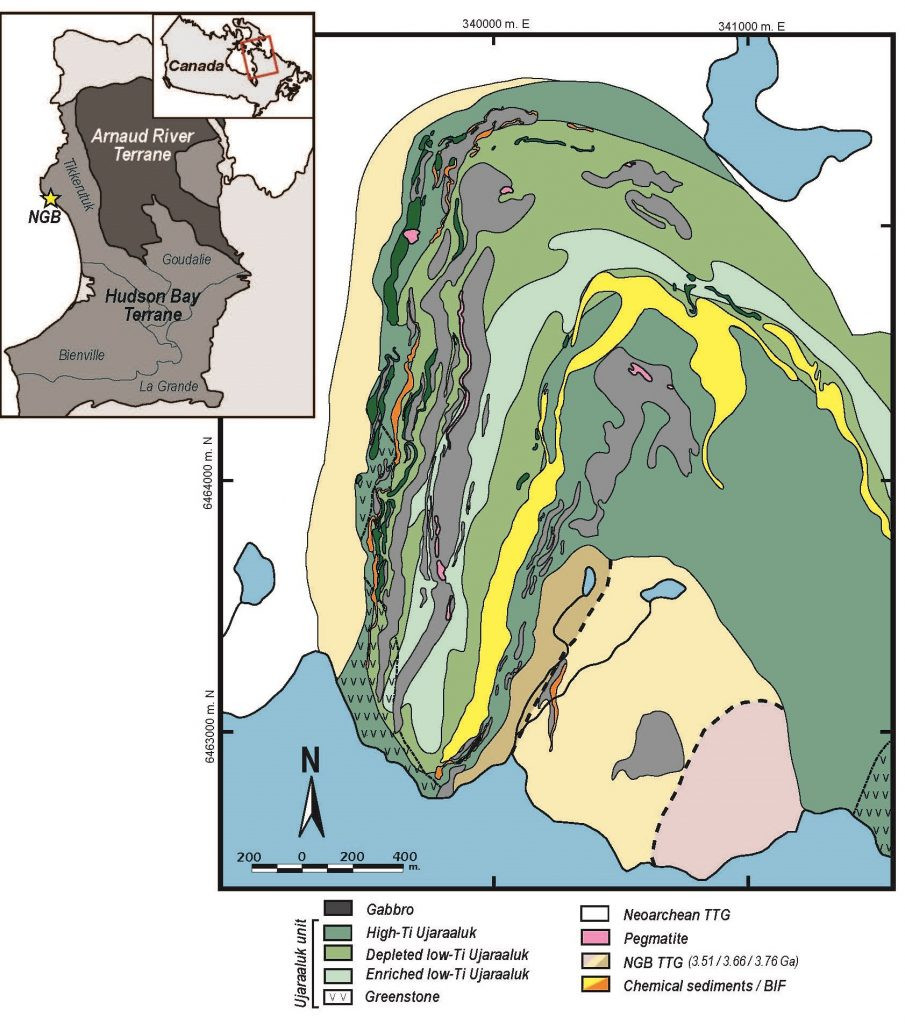 Geologic map of Nuvvuagittuq Greenstone Belt.
Geologic map of Nuvvuagittuq Greenstone Belt.
4. Discovering Earth’s Oldest Fossils
What evidence of early life has been found in the Nuvvuagittuq Greenstone Belt? The Nuvvuagittuq Greenstone Belt has yielded potential evidence of early life. In 2017, researchers found traces of life in the banded iron formation of the NGB, including small tubes made of hematite, resembling those created by bacteria in modern hydrothermal vent environments. These bacteria use iron for their metabolism.
The discovery of graphite, composed of carbon, in the BIF further supports this evidence. The graphite likely formed from metamorphosed organic material, containing reduced levels of the heavy carbon isotope, carbon-13 (13C). Lifeforms preferentially select the lighter carbon isotope, carbon-12 (12C).
If confirmed, these findings would represent the oldest fossil evidence discovered to date, predating previous discoveries by hundreds of millions of years.
5. Rockscapes.net: Your Gateway to Understanding Earth’s Geological Wonders
At rockscapes.net, we are committed to bringing the beauty and wonder of geological formations to your landscape designs. Understanding the history of Earth’s oldest rocks not only enriches our knowledge but also inspires creative possibilities in landscaping. Whether you are designing a tranquil garden or a bold outdoor space, integrating elements of natural stone can add a timeless touch.
5.1. Transforming Landscapes with Ancient Stone
How can you incorporate ancient stones into your landscape design? Imagine incorporating stones reminiscent of the Acasta Gneiss or the Jack Hills Zircon into your landscape. These ancient materials can serve as focal points, evoking a sense of history and connection to Earth’s deep past. At rockscapes.net, explore our selection of natural stones that bring unique textures and colors to your outdoor spaces.
5.2. Expert Guidance for Your Landscape Projects
What resources and support does Rockscapes.net offer for landscape design projects? Navigating the selection and placement of stones can be challenging. Rockscapes.net offers expert guidance to help you choose the right materials for your climate, style, and functional needs. Our team can provide insights into the geological properties of different stones, ensuring they not only look beautiful but also stand the test of time.
5.3. Design Inspiration for Unique Outdoor Spaces
Where can you find design inspiration for creating unique outdoor spaces? Looking for inspiration? Browse our project gallery featuring stunning landscapes created with natural stone. From minimalist designs to elaborate garden layouts, discover how you can transform your outdoor area into a breathtaking sanctuary. Rockscapes.net is your partner in creating landscapes that tell a story.
6. Summary: Key Takeaways on Earth’s Oldest Rocks
What are the key points to remember about Earth’s oldest rocks? The oldest minerals found are the zircons from the Jack Hills in Australia, dating back over 4.0 Ga, with the oldest at 4.4 Ga. The Acasta Gneiss Complex in Canada contains the oldest intact rocks, dating back to 4.02 Ga. The Nuvvuagittuq Greenstone Belt in Canada, though controversial, may represent the earliest crust at 4.31 Ga. Geologists continue to explore Archean cratons for more insights into Earth’s earliest environment.
7. Ready to Explore the Beauty of Natural Stone?
Ready to bring the timeless beauty of natural stone to your landscape? Visit rockscapes.net to discover a wide selection of stones, design ideas, and expert advice. Whether you’re looking to create a serene garden retreat or a striking architectural feature, we have the resources to help you succeed.
Contact us today to start your landscape transformation:
- Address: 1151 S Forest Ave, Tempe, AZ 85281, United States
- Phone: +1 (480) 965-9011
- Website: rockscapes.net
8. Frequently Asked Questions (FAQ) About Earth’s Oldest Rocks
8.1. What is the significance of studying Earth’s oldest rocks?
Studying Earth’s oldest rocks provides insights into the planet’s early formation, differentiation, and the emergence of life, helping us understand Earth’s history and evolution.
8.2. Where are the Jack Hills zircons located?
The Jack Hills zircons are located in southwestern Australia, within Archean metamorphosed sedimentary rock.
8.3. What dating method is used to determine the age of zircons?
Uranium-lead (U/Pb) radiometric dating is used to determine the age of zircons by measuring the decay of uranium into lead.
8.4. What type of rocks are found in the Acasta Gneiss Complex?
The Acasta Gneiss Complex contains highly deformed and metamorphosed tonalite-trondhjemite-granodiorite (TTG) rocks.
8.5. Why is the dating of the Nuvvuagittuq Greenstone Belt controversial?
The dating of the Nuvvuagittuq Greenstone Belt is controversial due to the absence of zircon, requiring alternative dating methods that are subject to interpretation.
8.6. What evidence suggests early life in the Nuvvuagittuq Greenstone Belt?
Evidence includes small hematite tubes and graphite with a preference for carbon-12, suggesting microbial activity in ancient hydrothermal vents.
8.7. How do magma oceans form on early Earth?
Magma oceans form from the intense heat generated by asteroid impacts and radioactive decay during Earth’s early formation.
8.8. What are banded iron formations (BIFs) and where are they found?
Banded iron formations are sedimentary rocks found in ancient ocean environments, containing iron minerals that precipitate out of the water column. They are found in the Nuvvuagittuq Greenstone Belt.
8.9. What role did planetesimals play in Earth’s formation?
Planetesimals collided with early Earth, contributing to its mass and generating heat that led to the formation of magma oceans.
8.10. How can understanding Earth’s geological history benefit landscape design?
Understanding Earth’s geological history can inspire creative and informed choices in landscape design, incorporating elements of natural stone to add a timeless and authentic touch.